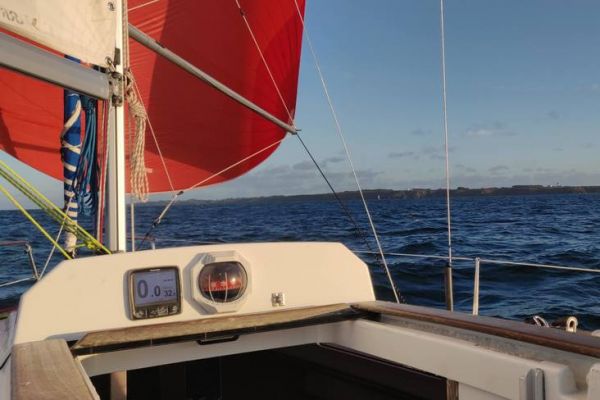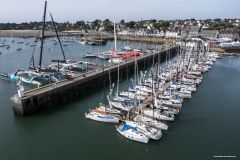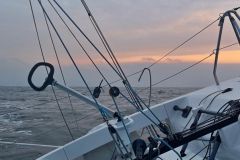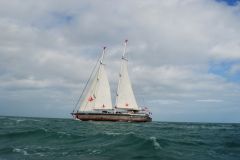When crossing the Atlantic from Europe to the Caribbean, the usual route takes us via Madeira, the Canaries or Cape Verde, from where we often set off on the long crossing to the West Indies, with the help of the trade winds blowing from east to west, generally between 15 and 20 knots. It's a downwind sailing segment, with a consistent but not too violent wind. For this downwind crossing, a brief review of the different sail combinations that can be used to optimize the crossing.
Mainsail - Genoa
This is perhaps the most classic choice: with the genoa and mainsail, you sail quietly into the waves, with a few surfs on the way if you're lucky. The main advantage of this combination is how easy it is to set up: you hoist or unfurl the mainsail, hoist or unfurl the genoa, and off you go. If the wind suddenly picks up, you can easily reduce speed by reefing or furling the sails to control the boat.
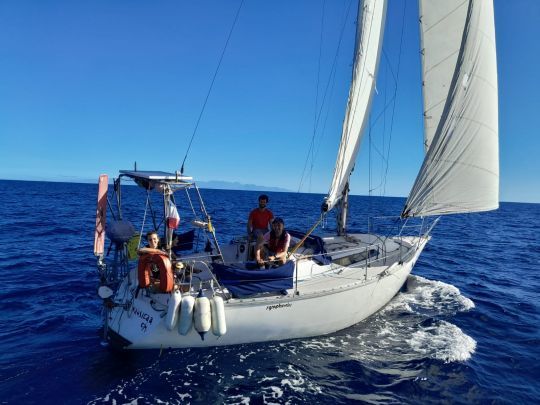
The main disadvantage of this combination is that you have to luff up enough to inflate the genoa: if you stay too far downwind at high tide, the mainsail will strip the genoa, which, deflated, will cause the boat to lose speed and stability. It's therefore important to luff up enough to allow the headsail to be effective, which can be a problem in transatlantic sailing, as it often takes us away from the direct route to the West Indies. If the wind gets too strong, you can of course swap your genoa for a solent or staysail, which will limit the boat's power.
Mainsail - Trailing Genoa
Keeping the same set of sails, but this time to be able to go downwind, you can pitch the genoa to windward, in a scissor (or butterfly) action, so that it is not blown away by the mainsail: one sail on each side, and off to the Caribbean! To pitch this genoa, use the spinnaker pole, if you have one on board, and tie it to the mast bell on one side, then put the jaws of the spinnaker pole on the genoa foresheet on the other, before lowering to inflate it on the other side of the mainsail.
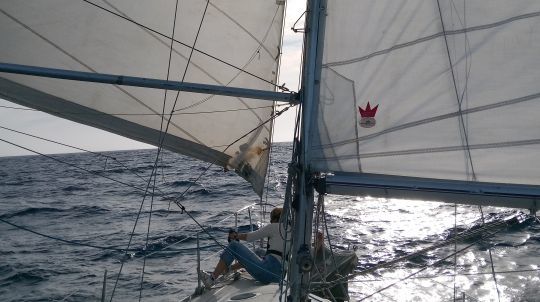
The advantage of this solution is that you can gybe all the way downwind, and the boat remains stable if the wind and waves are in the same direction. The disadvantages of this solution are that, in the event of a problem, it's difficult to furl or reef quickly, and a wild gybe awaits you at the first helm error. To avoid this, it's often a good idea to combine genoa pitching with the use of a boom restraint or brake. This will prevent a violent gybe that could well get you into trouble in the middle of the ocean.
Genoa alone
Another way of preventing the dreaded gybe is simply to lower the mainsail. By lowering the genoa alone, you can let yourself be pulled along by the headsail, which no longer has any problems with the wind.
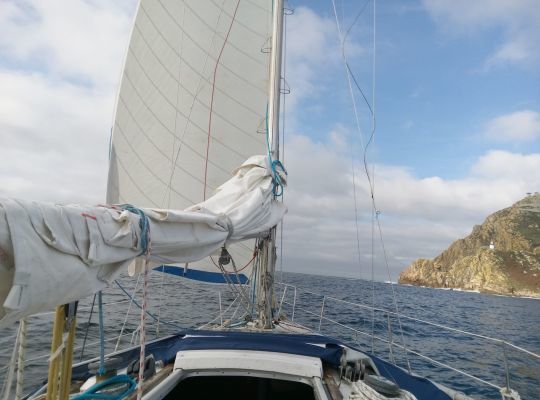
This solution ensures a high level of safety on board by eliminating the risk of boom strike, but may limit the boat's performance if the trade winds are not well established. It's a reassuring solution when the wind picks up, but the boat may lack stable support in waves below 15-17 knots, especially if it's not a large-coverage genoa.
Mainsail - Spinnaker
We're in the middle of a downwind crossing, so it's time to talk about the downwind sail par excellence: the spinnaker! If you've got a symmetrical spinnaker, then, as with a tangled genoa, you can probably boast of being able to sail a direct course, however downwind it may be.
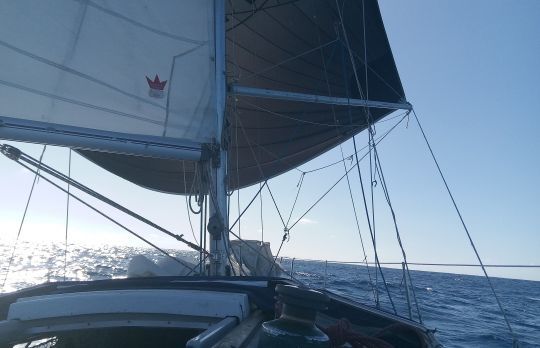
The advantage of the spinnaker is that it gives you decent speed in light airs, and, if kept inflated, offers you a certain stability in waves. So it's your ideal weapon when the trade winds get fickle, dropping below 15 knots. The disadvantage of the spinnaker is that it often requires more sustained attention, that in the event of a problem (such as a human overboard) it complicates the situation, and that in the event of a strengthening wind, it can provoke unexpected luffing starts. The secret of the spinnaker is therefore to set it off first in light airs, before achieving sufficient control of the sail to keep it on in medium airs.
Mainsail - Double Genoa
The last combination proposed is a little more original, and consists of hoisting two headsails, one to windward and the other to leeward of the boat, what were once called twin staysails. The easiest way to do this is to use a main stay and a drop stay, and hoist or unfurl the two sails, pitching one to the windward side and leaving the other to leeward.
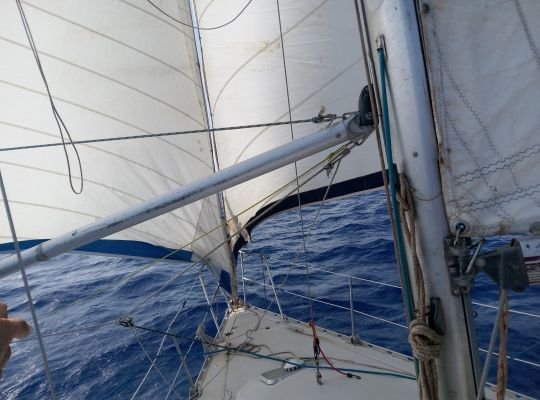
This solution offers two main advantages: it maximizes the sail area when sailing downwind, and therefore ensures good speed even when downwind, but it also provides the boat with unprecedented stability, breaking the rhythmic roll usually found when sailing downwind, thanks to the leeward genoa, which inflates or deflates according to the course, limiting the boat's roll. To implement this solution, you have to luff up a little in relation to the downwind, so that all three sails can catch the wind correctly. You can also choose to lower the mainsail and let the two genoas at the front pull the boat, which eliminates the problem of wild gybing and boom passage. The main disadvantage of this solution is its somewhat complex set-up, and the difficulty of being able to react quickly in the event of a problem, by the time the system is de-reefed. It's a little-known solution, but one that has proved its worth!
Finally, whatever sail combinations you use, the rule of the game is always the same: you want to sail with the weather sail, i.e. the one that best suits the weather you're having. For example, it's probably not a good idea to hoist the spinnaker during a cruising passage constantly punctuated by squalls at 25 knots, or to keep the mainsail reefed when you're struggling to pick up speed in light airs. It's all about knowing the different combinations so you can make the right choices when the time comes!
